Warning: This piece contains some explicit details of the Rwandan Genocide.
Paul Kagame is a paradox. He’s a mild-mannered militant; an altruistic autocrat; an internationally decorated despot. So it’s no wonder then that the country he governs is equally enigmatic.
Exactly 30 years ago, Rwanda was home to arguably the single most murderous 100 days in human history—a period which saw the genocide of the Tutsi minority ethnic group at the hands of their Hutu neighbours, friends and even family. Today, it’s heralded by many as a beacon of hope for countries suffering through similar strife; an example of a nation that, through the painstaking process of reconciliation, has cast aside its divisions and come together once more in peaceful unity. But life in Rwanda isn’t a fairytale. Redemption has come at a cost. The country’s Global Freedom Score this year—a measure composed of 10 political and 15 civil rights, each scored and weighted—placed it in the bottom third of Africa’s 54 countries; a score that put it level with Palestine’s West Bank. Peace, in Rwanda’s case, is held with an iron fist.
And for all the celebrated economic development, half of the nation’s population still live below the poverty line. It’s truly a country of contrast, and one that has, for me, possessed a certain magnetism for some time. In Guinea Conakry, after spotting the Pont Paul Kagame on my way out of the capital, I delved into the country’s patchwork past and felt an immense draw to experience its division and unity, breathe in the bloodshed and healing.
But before I could get into all that, I first had to get there. We had grand plans of making good time to the Rwandan border after a day of relaxation on one of the islands of Lake Bunyonyi. This plan had been masterminded by Nadia who’d dreamt up a rather slick scheme for sidestepping the few dozen kilometres of turbulent gravel that line the lake’s shore. Rather than returning to our original dock and retracing our strokes back up the crater’s lip, we had arranged alternative passage to Bunyonyi’s western shore. This was a convenient point to begin our onward journey thanks to the lakeside track’s recent promotion to the rank of road, a position which earned it the privilege of a fresh coat of tarmac.
We rose at 5:30am and packed, bleary eyed, in the gloom of predawn before hauling our bikes down to the pier and posting them onto our barge. Despite my Jiggley senses tingling, I was relieved to find Lake Bunyonyi free from potholes… though not, as it happened, from speed bumps. Half an hour into our two hour journey, the skipper—who was huddled in the insulating embrace of an itchy blanket—yielded a swaddled arm to answer his phone. After a brief exchange, the phone was passed forward. On the other end of the line, a voice began probing persistently about whether there was a Daniel aboard. I took stock. No Daniel in sight. I informed him of the fact, to which he replied that a passport had been found in one of our rooms, along with a few hundred dollars in hard cash. I relayed this information to the group, and was met by two puzzled faces and one more buried in the palms of its owner, Seamus Daniel White.
Two and a half hours later, we pulled up to a pontoon that appeared to have all but given up on its task of buoyancy. A little worryingly, the thing seemed to be cordoned off with red and white tape—an accessory typically worn by something that’s past its best. Unperturbed, our skipper leapt off and we began to unload our bikes: a stressful yet ultimately successful endeavour. Once we’d paid the man the agreed rate, plus a little extra for the false start, we turned to the task of escaping the decaying platform onto dry land. This too was a stressful yet ultimately successful endeavour… for all but one of us.
As I tiptoed my way along the path of least decomposition, I heard an abrupt crack and, without a moment’s hesitation, shot straight through the decking. Luckily, my crotch opted to break the fall and I avoided a full submersion, escaping with little more than a soggy foot and an enhanced soprano. Once I’d recovered my pride and my baritone, we set off for the border town of Kyanika.
Just north of the border, we stopped at a roadside weighing scale—an essential tool for any village shop, that’s typically used to price sacks of grain, produce or charcoal. We, however, had other plans for it: to settle a longstanding debate between Nadia and Tom, who each claimed that the other was riding a lighter bike. We slipped its owner a note and strung our loaded beasts from the hook one by one. The results were, for the most part, unsurprising. Tom’s bike emerged victorious, at 23kg, to a chorus of I told you so’s from Nadia. Hers followed close behind at 26kg and Seamus’ took third place at 28kg. Madonna also ran. Despite numerous attempts to shed her bulk, to my amazement, she still tipped the scales at a robust 45kg. Granted, this revelation filled me with a certain amount of pompous pep on the ensuing hills, and permitted me to raise an eyebrow or two at my colleagues on their featherweight bikes, but my newfound self-satisfaction wouldn’t last long.
Crossing into Rwanda was, like all the best frontiers, akin to walking through the back of the wardrobe: two entirely different worlds separated by nothing more than a few metres. Though Narnia, in this case, was distinguished by something far more magical than the appearance of an anxious flautist with hooves. The country is a veritable Mecca for cyclists. Often dubbed the land of a thousand hills, the whole country is woven together by an exquisite lattice of roads that rise and fall with the landscape, uniting the largely rural population. It's no wonder that those who appreciate such things flock from far and wide for a taste. In fact, the UCI—the international governing body of racing cycling—have deemed Rwanda’s riding so spectacular that it’s been chosen to host the 2025 Road Cycling World Championships, marking the first time the race will take place on African soil. The country has also been home to the Race Around Rwanda, a 1000km self-supported gravel race, since 2020—a race in which my friend Adrien, of Iron Train fame, once podiumed, finishing in a touch under 60 hours.
But cycling in Rwanda is not only an activity of imported popularity. In fact, the economic engine of the country has no engine at all, and the wheels of progress are spoked. Everything is transported by bikes, be it livestock, furniture, or people. The bikes that do it are nothing special: each consists of a simple steel frame, wrought iron rack, and single freewheel gear. The riders, on the other hand, are nothing short of Herculean. Remember, if you will, that I’m hauling along 45kg of Madonna with the assistance of all the conveniences of a modern bicycle: ergonomics, aerodynamics and, crucially, gears. The locals, on the other hand, are often pedalling more than four times that load, on a bike of brutish geometry that’s lucky to have pedals, let alone gears. It’s spectacularly humbling.
In the morning, after a late night in Musanze watching England drag their feet through yet another knockout round, we set off for our first full day of Rwandan riding, fortified by another of the country’s charms: quality coffee. Despite months of traveling through top coffee-producing countries, I rarely found a place to enjoy a cup of the stuff. I can only assume that the export market price is often high enough that siphoning off crops for domestic consumption simply isn’t worth it. For the money-minded, getting high on your own supply has always been a cardinal sin. Thanks to the invisible hand, I’d become used to suffering through watery brews served with a chaser of grounds, or worse, their powdered substitutes. But, in Rwanda, you could find bean-to-cup coffee almost anywhere—another quirk of the country’s enigmatic development.
Coffee aside, our plan for the day was to dine on perhaps the finest of Rwandan delicacies. Gravel. If Rwanda’s cycling is indeed Mecca, then its gravel is the great mosque. The route we’d chosen would bisect two lakes that sit at the base of the Virunga Mountains—an otherworldly land of volcanoes and gorillas—before taking us off the beaten track into the rural heart of the country. By way of an appetiser, we tackled ten kilometres of tarmac—a stretch that was made all the more thrilling by the entourage that accompanied us.
Rwanda takes the phenomenon of constant company to new heights. In other countries, it was only when you stopped that the crowds would materialise, but, in Rwanda, the crowds move with you. As I attempted to overtake the first local cyclists of the morning, I was surprised to find they kept stride, spurred on, no doubt, by a mixture of curiosity and pride. They were clearly keen to show the muzungu what they’re made of. And by God, was it something special.
Before long, I was in the throes of an all out effort, climbing the steady gradient at close to 30km/h. The Rwandans kept pace. The mask of serene calm painted across their faces stood in amusing contrast to the twisted effort etched across my own. The magnetic effect of our racing peloton soon attracted a swarm of riders, and, before I knew it, I was barreling along at the centre of a pack some 30 strong. Thankfully, my route soon branched off, allowing me to make my excuses. The locals continued on, leaving me and my gelatinous limbs in a heap by the junction as I waited for my more sensible companions to catch up. Such races became a hallmark of Rwandan cycling and proved to be either hugely heartening or incredibly irritating, depending on how many heats had already occurred that day.
The Rwandan gravel was all that was promised and more. It took us past the lakes, allowing a quick dip, and into the depths of the countryside—a place of exquisitely ordered agriculture that displays the ingenuity of generations of growers. Terraces carved into the hillsides make the most of the unforgiving slopes and give the landscape a unique, pop-up appearance—more like the product of intricate origami than the results of hard labour with a shovel. Paddy fields line the wide valleys, Rwanda’s only flat ground, and benefit from the natural irrigation of the monsoon flooding. The tracks we rode traced the hills’ contours, occasionally dipping down to the valley floors and crossing raised roads, before winding back up to tackle the next of the country’s thousand.
By the time we stopped for a late lunch—a carbohydrate feast of formidable proportion—we were almost as saturated by stunning vistas as we were by the four editions of potato before us. This was fortunate timing, as from here the views all but disappeared. Sadly, the same couldn’t be said for the carbs, which stubbornly refused to diminish despite some ferocious gobbling. As we tucked away chips into previously undiscovered corners, the locals seized the moment to resurface our route. This turned out to be a country-wide directive that all but ruined the terrain from that point onward, putting an end to our brief love affair with Rwandan gravel. Instead, we spent our final day of riding trapped in an understanding with its less striking sibling, tarmac. Still, the tarmac allowed us to make quick progress. So quick, in fact, that on the final switchback descent to Kigali, Rwanda’s capital, I was finally able to achieve a cycling holy grail: the speeding ticket. If only Madonna had a number plate—what I’d give to have that picture.
Kigali is a slick city, equipped with all the trappings of a well-managed metropolis. Traffic travels in the assigned lanes, green spaces and public parks are part of the urban landscape, and bins line the pavements. The presence of pavements alone places it in a relatively privileged position compared to some of the capitals I’ve visited. When we arrived, the city appeared to be decked out in the French Tricolore. This was a surprise given the fractious relationship between the two countries ever since the French involvement in the training of Hutu militias, the initial perpetrators of the state-sponsored genocide. The rift is so deep, in fact, that in 2008 Kagame switched the official language taught in Rwandan schools from French—a hangover of Belgian colonial rule—to English, marking his general rejection of Francophone influence in favour of closer ties with the Anglophone world.
After some inspection, it appeared that, in Kigali, the French flag flew inverted. A little more digging revealed that what fluttered in these streets was, in fact, the flag of the Rwandan Patriotic Front, Paul Kagame’s political party. Elections were close, which, if all went as expected—or, possibly, as arranged—would mark the start of Kagame’s fourth presidential term. As a vehement Francophobe, it’s quite possible that Kagame adopted this symbol for his party as a form of subversive protest to the nation he blames as a catalyst of the country’s dark past.
Being stationed in the capital for a few days gave us the opportunity to delve deeper into this defining window of Rwandan history. Kigali’s Genocide Memorial is a harrowing place. Its foundations lie atop a mass grave—the final resting place of a quarter of a million Tutsis—and the building itself tells the story of their genocide. We spread out and slowly paced the halls, each step revealing stories of unimaginable tragedy. These were brutal deaths. Mothers and sons were chained together and buried alive. Women were raped and murdered before their children, and their bodies were thrown carelessly into pit latrines. Perhaps the most alarming fact is that these atrocities weren’t committed by faceless mercenaries with advanced weaponary, but instead by neighbours, friends and even family, armed with the implements of everyday life. Shovels, picks and sickles, once simple tools of peaceful farming, became the instruments of mass murder. It was a struggle to reconcile this brutality with the warmth we’d felt cycling through the very same regions; the tools once wielded with such callous cruelty were now waved instead in friendly greeting.
I could do nothing but cry at the merciless disregard for human life. In a room that displayed a collage of photos taken from town notice boards across the country—a tool used by communities in the chaotic aftermath to determine the fate of their loved ones—a man wept quietly on a bench. I wonder if he too simply felt the profound wrench of inhumanity, or whether the stories within these walls struck a chord closer to home.
The rule of reciprocity—that hard-wired human road map of the two-way street—is a double edged sword. It can be an engine of community, as Rwanda witnessed in the years following the genocide, where trust was rebuilt through reciprocal compassion. It is, however, equally capable of fanning the embers of our baser instincts, which eventually ignite, razing the very same communities to the ground. Whether constructive or destructive, back-scratching or eye-snatching, both outcomes are just two sides of the same coin.
It took impressive leadership in the years after the genocide ensure that this coin fell on the right side. Having led the Tutsi resistance to victory, it would have been all too easy for Kagame to slip into a retributive quagmire. But now, after 21 years under de facto rule, it’s crucial that the country begins to support more than one vision of the future. However, reports of the suspicious disappearance of outspoken figures against Kagame’s regime, or the bureaucratic hurdles preventing his political opponents from running in elections, suggest a concerning path ahead for a nation of such promise. Only time will tell if the revolutionary fist—the somewhat ironic symbol of Kagame’s incumbency—will loosen its grip on power to pave the way for true progress.
In the coming years, though, such change is unlikely. During our days in Rwanda, Kagame won his fourth term, receiving an astounding 99 percent of the vote, from a declared voter turnout of the same proportion. For now, the land of bloodshed and bicycles, poverty and pavements, will continue to wrestle with the shackles of its past.




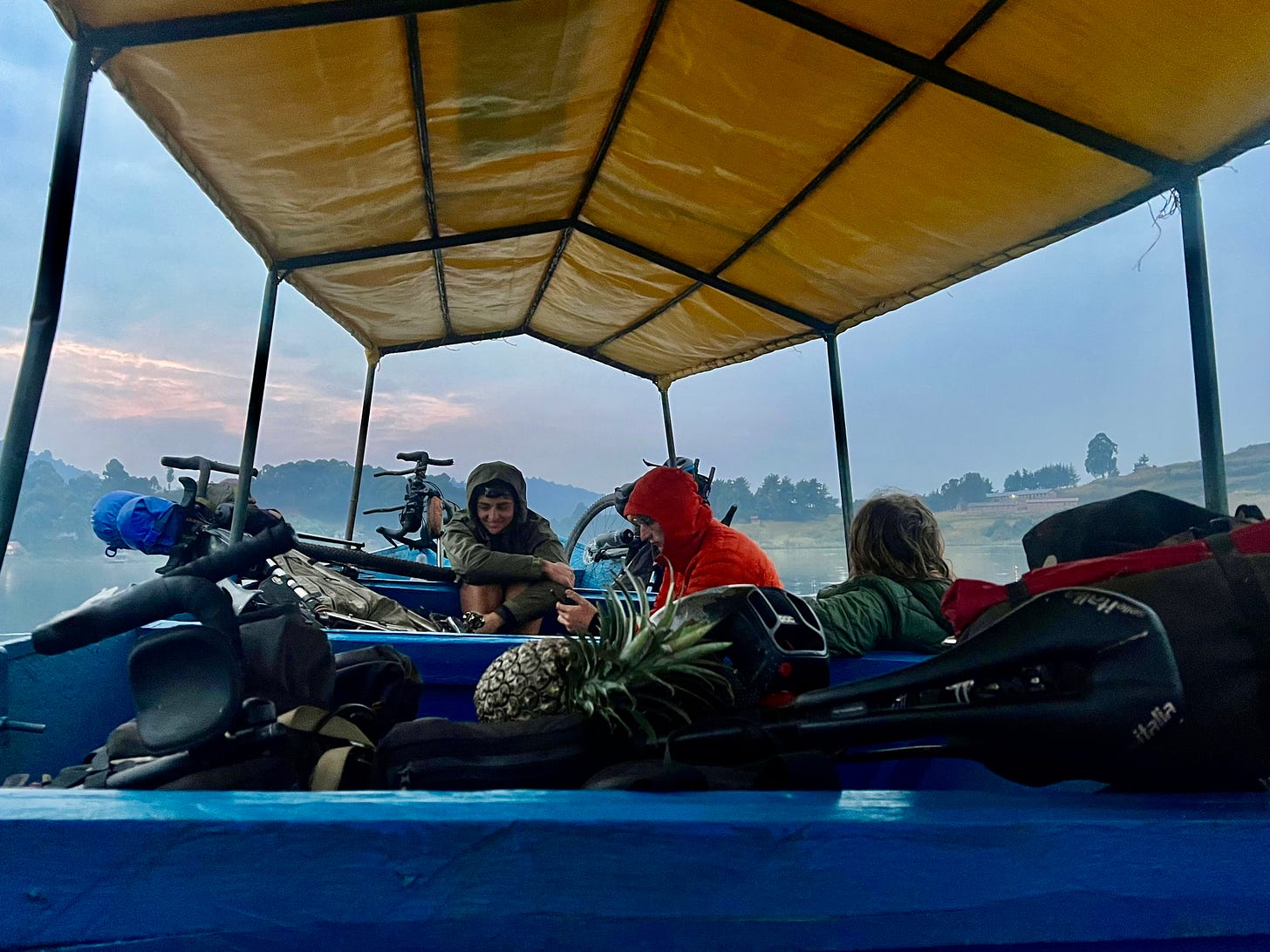

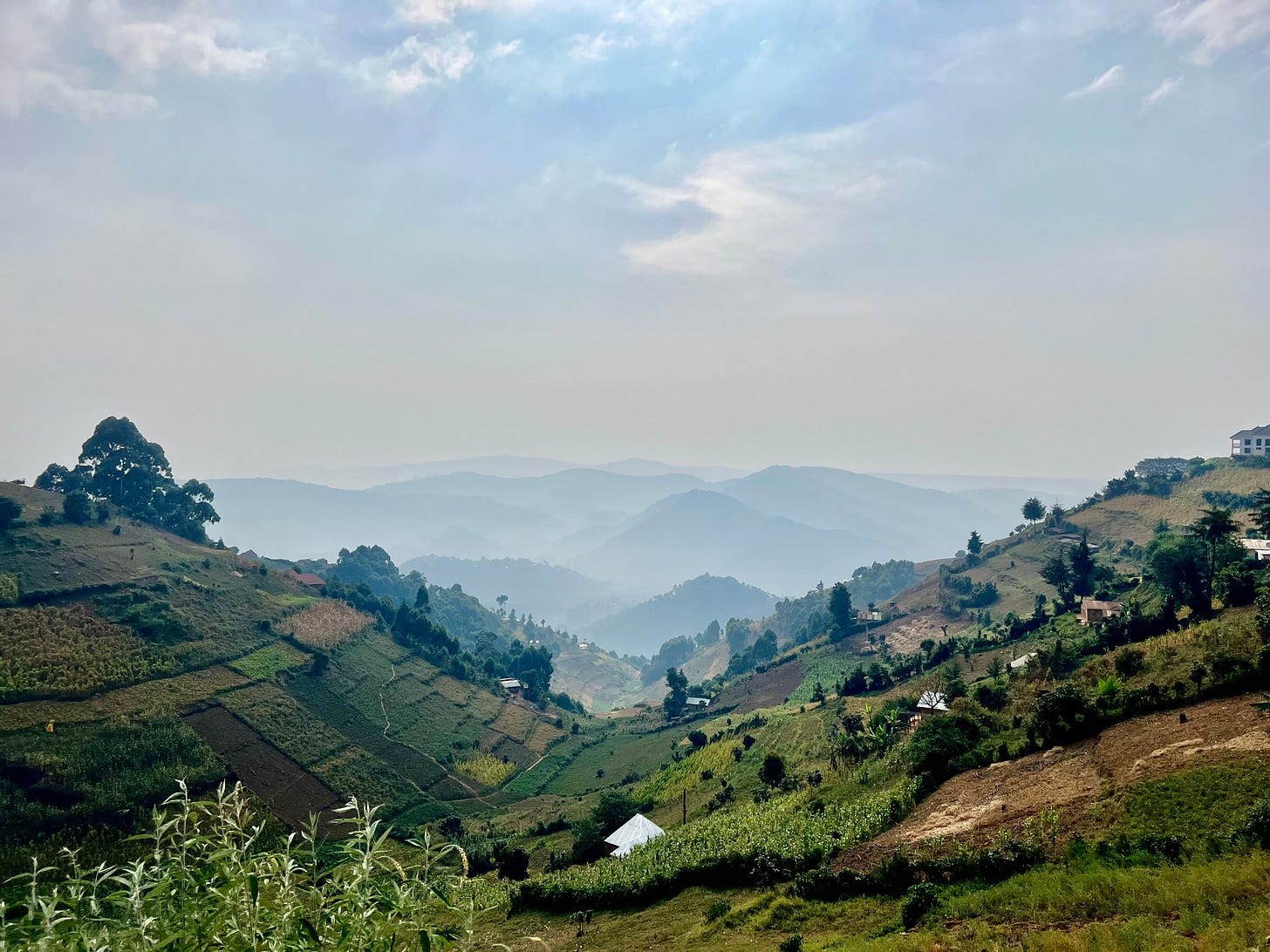

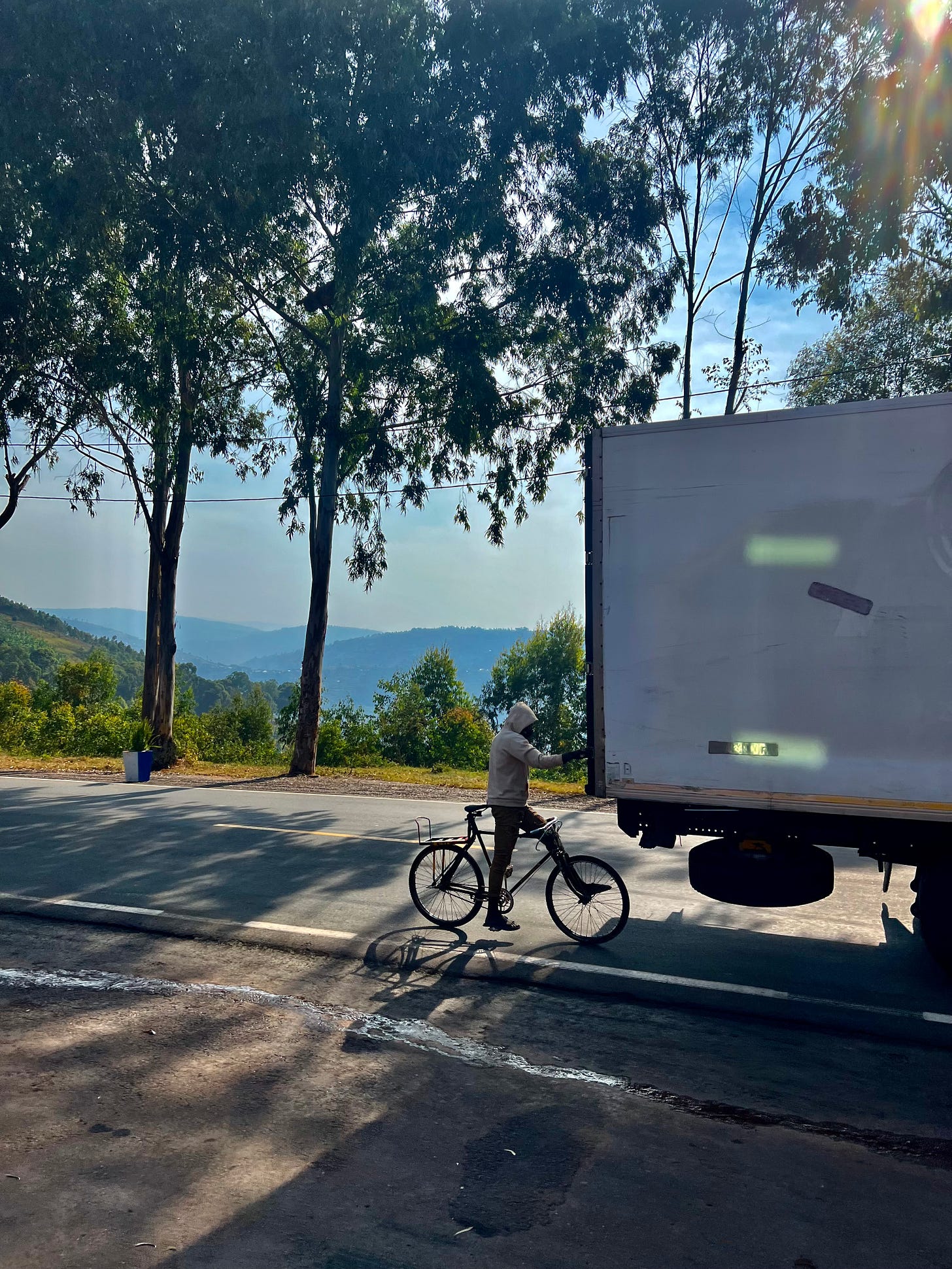
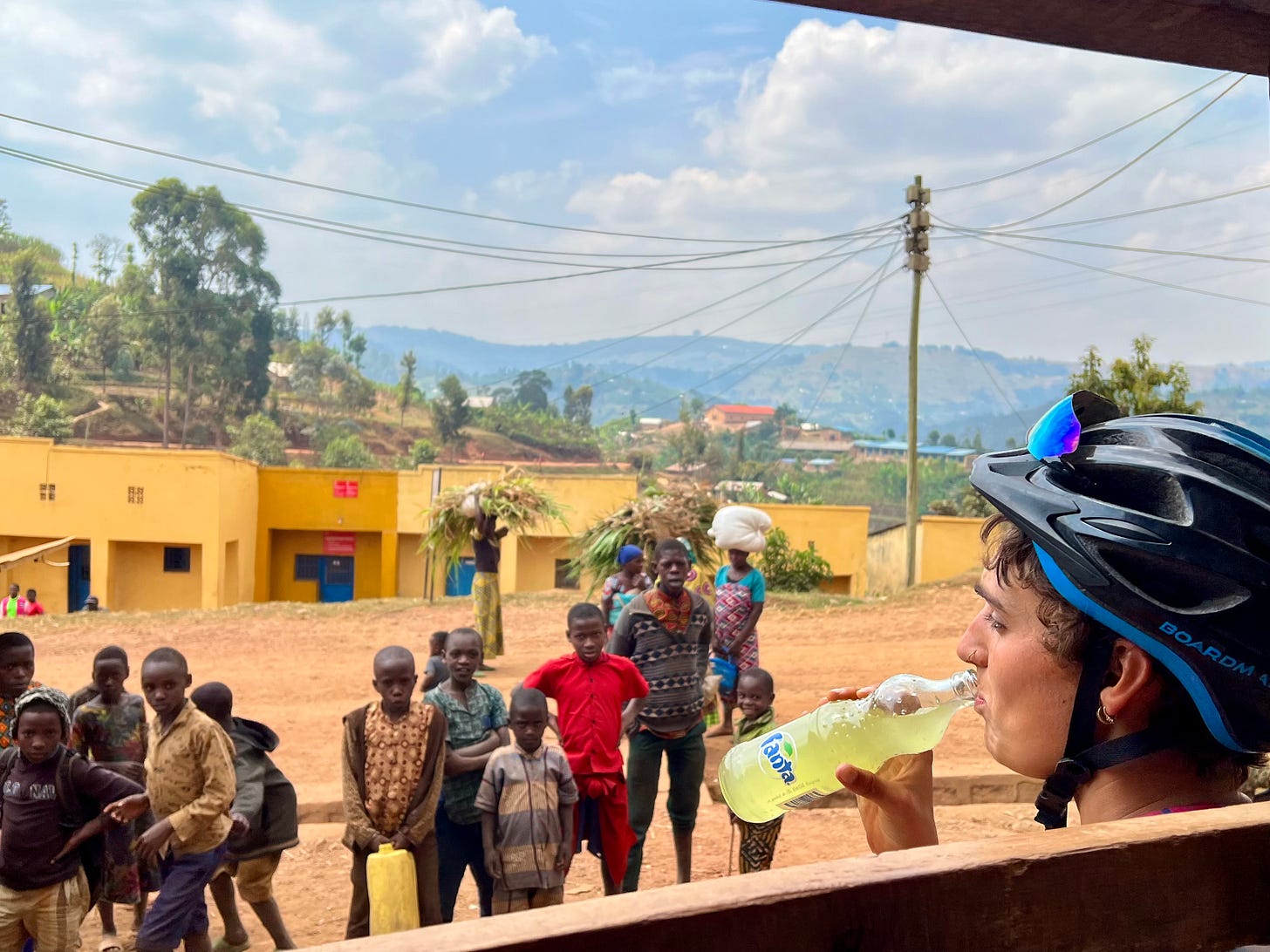
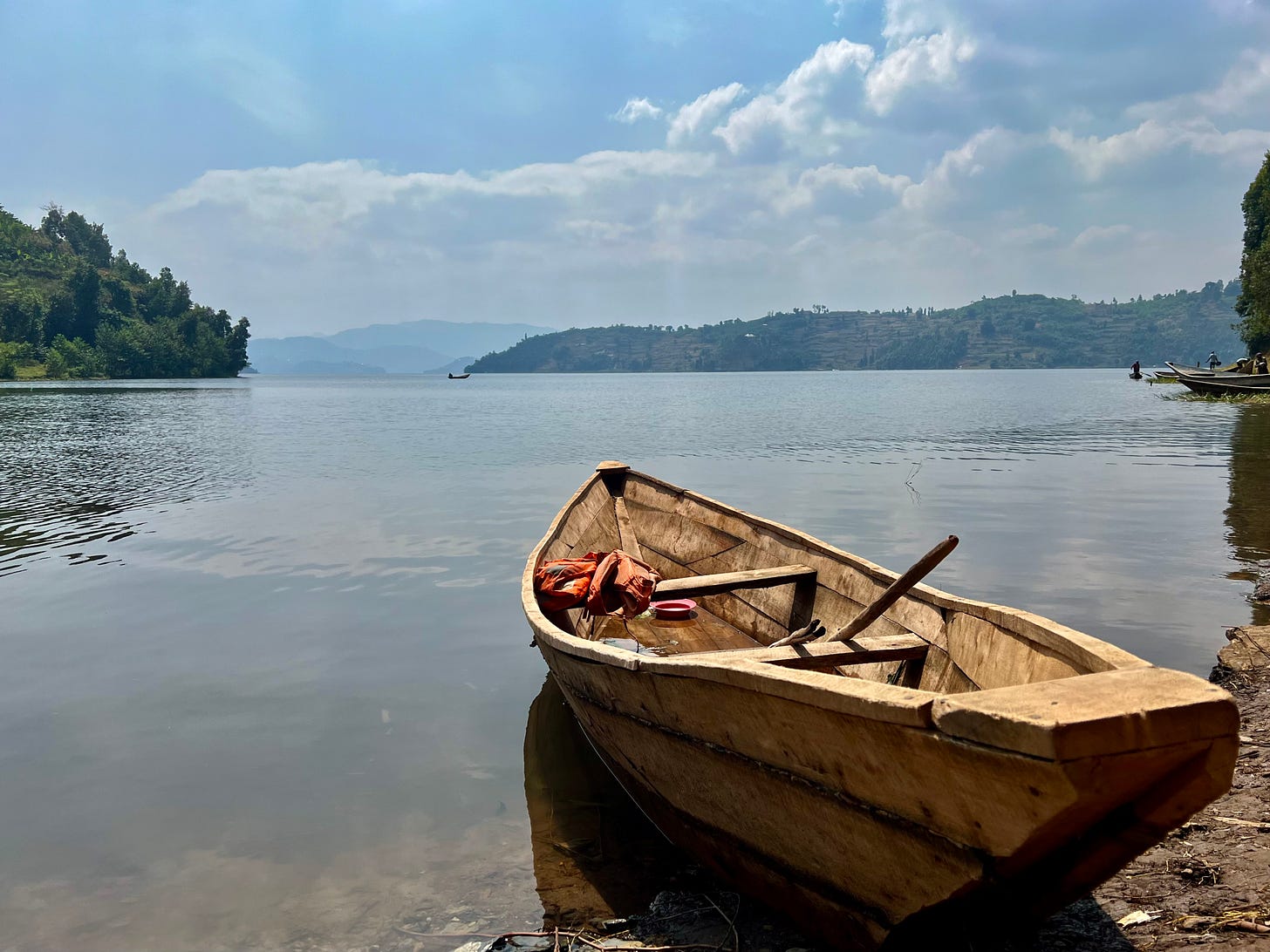

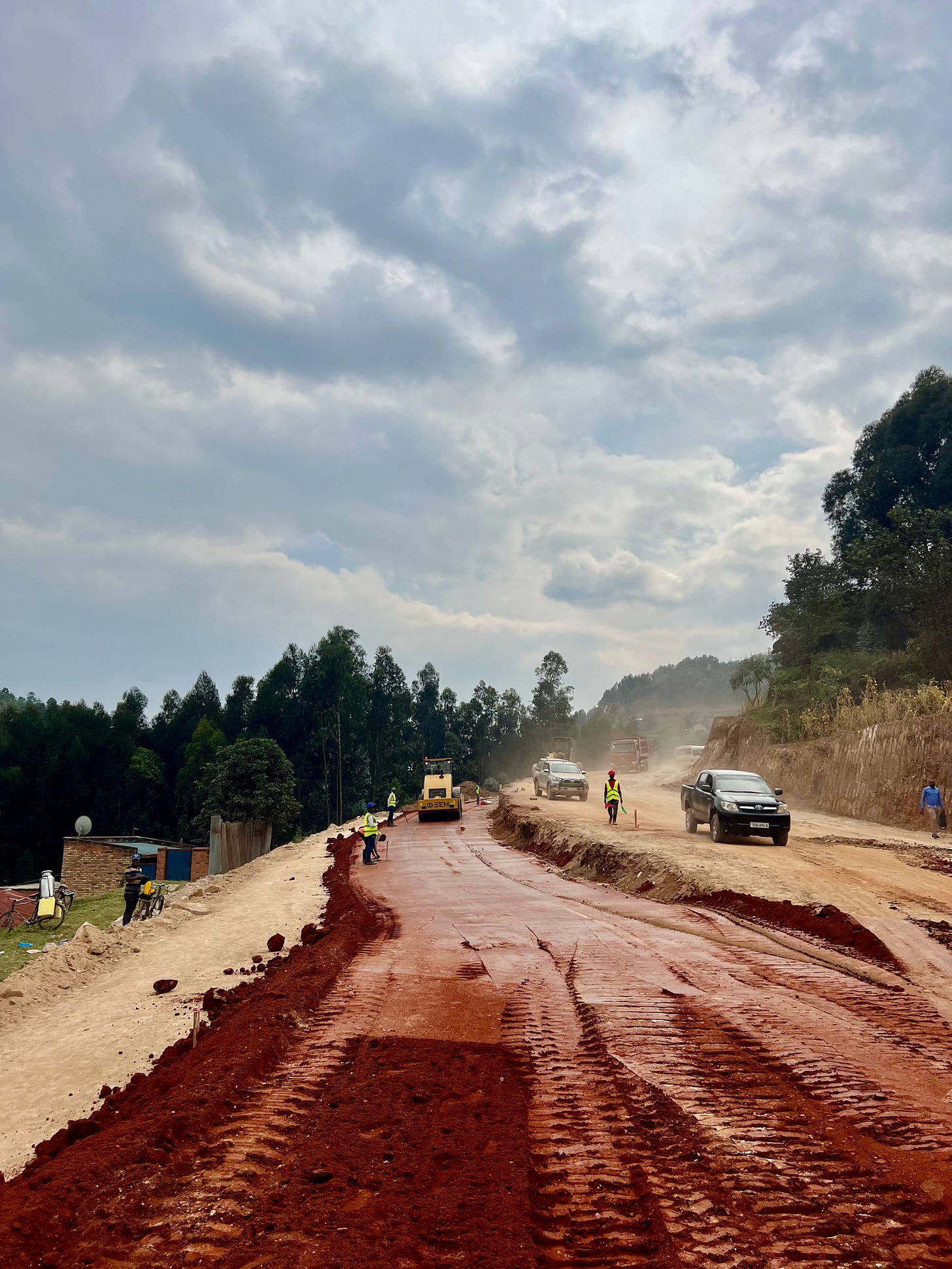

Have been enjoying getting through all of these slowly but this one is absolutely top drawer mate. Reads like something straight out of a broadsheet. Much respect
Every days a school day - beware those dodgy boards - glad the soprano was only a temporary feature - take care Rosie xx